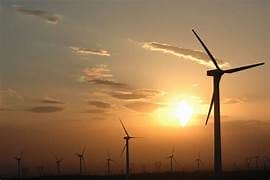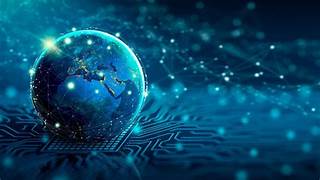Wind Power: An Overview
October 24, 2024 2024-10-17 22:27
Wind Power: An Overview
In recent decades, the world has seen a significant shift towards renewable energy sources as a solution to the growing concerns over climate change and the depletion of fossil fuels. Among the leading technologies in the renewable energy sector, wind power has emerged as a key player due to its vast potential and the relatively mature technology behind it. Wind power harnesses the energy of wind to produce electricity, offering a sustainable, low-carbon alternative to traditional fossil fuel-based power generation.
This article provides a comprehensive overview of wind power, covering how wind turbines work, the different types of wind energy systems, the benefits of wind power, the challenges it faces, and the future potential of wind energy.
How Wind Power Works
At its core, wind power involves converting the kinetic energy of wind into electrical energy. The process takes place through the use of wind turbines, which are typically large, rotating structures mounted on tall towers. Wind turbines consist of several key components:
- Blades: These are designed to capture the kinetic energy from the wind. Modern turbines typically have three blades, which are aerodynamically shaped to catch the wind efficiently.
- Rotor: The blades are attached to a rotor, which spins when the wind blows. The rotor’s movement is what ultimately generates electricity.
- Nacelle: This is the housing that contains the gearbox and generator. It sits at the top of the tower and converts the mechanical energy from the rotor into electrical energy.
- Tower: Wind turbines are mounted on towers that can be 100 meters or taller, depending on the model. The height of the tower helps capture stronger and more consistent winds at higher altitudes.
When the wind blows, the blades rotate and turn the rotor. This rotational energy is transferred through a gearbox, which increases the rotational speed and powers the generator. The generator then converts this mechanical energy into electricity, which can be transmitted to the grid for distribution.
Types of Wind Energy Systems
Wind power systems can be broadly categorized into onshore and offshore wind farms, each with its own advantages and challenges.
1. Onshore Wind Power
Onshore wind power refers to wind turbines that are installed on land. This is the most common form of wind power generation and is widely used around the world. Onshore wind farms are often located in rural or open areas where wind speeds are relatively consistent and strong. The advantages of onshore wind power include:
- Lower costs: Onshore wind projects are generally cheaper to install and maintain compared to offshore wind farms.
- Established technology: Onshore wind technology has been around for decades, making it a mature and well-understood system.
- Accessibility: Maintenance and grid connection are easier on land compared to offshore installations.
However, onshore wind farms also face challenges such as:
- Land use conflicts: Wind farms require large tracts of land, which can lead to conflicts with agricultural, residential, or conservation land use.
- Noise and visual impact: Some communities oppose onshore wind farms due to concerns about noise and the visual impact of the turbines on the landscape.
2. Offshore Wind Power
Offshore wind power involves the installation of wind turbines in bodies of water, typically in the ocean or large lakes. Offshore wind farms are usually located far from the shore to take advantage of stronger and more consistent winds over open water. The key benefits of offshore wind power include:
- Stronger winds: Offshore wind farms benefit from stronger and more reliable winds, resulting in higher electricity generation potential.
- Reduced land use conflicts: Since the turbines are located in the water, there are fewer concerns about land use or visual impact.
- Large-scale potential: Offshore wind farms can be built larger than their onshore counterparts, providing greater capacity to generate electricity.
However, offshore wind power also has its challenges:
- Higher costs: Offshore wind farms are more expensive to install and maintain due to the harsh marine environment and the need for specialized equipment and infrastructure.
- Difficult access: Maintenance of offshore turbines is more complicated and costly due to the need for vessels or helicopters to reach the turbines.
Benefits of Wind Power
Wind power offers several key benefits, which have contributed to its growing popularity as a clean and sustainable energy source.
1. Renewable and Sustainable
Wind power is a renewable energy source, meaning it is naturally replenished and inexhaustible. Unlike fossil fuels, which take millions of years to form and are finite, wind is constantly available and will not run out as long as the sun heats the Earth’s atmosphere.
2. Low Carbon Emissions
One of the most significant advantages of wind power is that it produces very low carbon emissions compared to conventional fossil fuel-based power generation. Once a wind farm is built, it generates electricity without burning fuel, and the only emissions involved are those associated with manufacturing, transporting, and installing the turbines. According to estimates, wind energy can save up to 90% of the CO₂ emissions that would otherwise be produced by coal or natural gas power plants.
3. Energy Independence
Wind power contributes to energy security and independence by reducing the reliance on imported fossil fuels. Countries with abundant wind resources can generate their own electricity domestically, decreasing their dependence on foreign energy supplies and increasing their energy sovereignty.
4. Job Creation
The wind energy sector has proven to be a significant job creator. From manufacturing and installation to maintenance and research, wind power provides employment opportunities across a wide range of fields. In many regions, the development of wind farms has revitalized local economies by providing jobs and boosting infrastructure development.
5. Scalability
Wind power systems are highly scalable. Wind turbines can be installed as single units to power a single home or as large wind farms with hundreds of turbines generating electricity for entire communities or regions. This flexibility makes wind power an attractive option for both small-scale and utility-scale energy generation.
Challenges Facing Wind Power
Despite its many benefits, wind power faces several challenges that must be addressed to fully realize its potential.
1. Intermittency
Wind power is inherently intermittent because wind speeds fluctuate over time. While wind turbines can generate electricity when the wind is blowing, they cannot produce power when the wind is calm. This intermittency creates challenges for grid operators who must balance wind power with other energy sources to ensure a stable supply of electricity.
2. Grid Integration
As wind power continues to grow, there are concerns about how to integrate large amounts of wind-generated electricity into existing power grids. Wind power is often generated in remote areas, far from population centers, which requires investment in transmission infrastructure to deliver the electricity to where it is needed. Additionally, the variable nature of wind power can make it difficult to predict electricity supply, complicating grid management.
3. Environmental Concerns
While wind power is much cleaner than fossil fuels, it is not without its environmental impacts. Wind turbines can pose risks to wildlife, particularly birds and bats, which can collide with the spinning blades. Additionally, the construction of wind farms can disrupt local ecosystems, especially in sensitive habitats.
4. Public Opposition
In some regions, wind farms face opposition from local communities due to concerns about noise, aesthetics, and potential impacts on property values. Efforts to build new wind farms may encounter resistance from residents who do not want turbines near their homes or in scenic areas.
The Future of Wind Power
Despite the challenges, the future of wind power looks bright. The global wind energy market has been growing steadily, and technological advancements are continually improving the efficiency and cost-effectiveness of wind turbines. Several trends point to the increasing role that wind power will play in the future energy mix:
1. Floating Wind Turbines
One of the most promising developments in wind power is the advent of floating wind turbines. These turbines are mounted on floating platforms anchored to the seabed, allowing them to be placed in deeper waters where wind speeds are higher. Floating turbines have the potential to open up vast new areas for wind energy development, particularly in regions where the continental shelf is too deep for traditional offshore turbines.
2. Taller Towers and Larger Turbines
Wind turbine technology is evolving rapidly, with newer models featuring taller towers and larger blades. Taller turbines can capture stronger winds at higher altitudes, while larger blades increase the amount of energy generated by each turbine. These advancements are making wind power more efficient and cost-competitive with other forms of energy generation.
3. Energy Storage Solutions
The issue of wind power intermittency is being addressed through the development of energy storage technologies. Batteries and other storage systems can store excess electricity generated by wind turbines during periods of high wind and release it during periods of low wind. This ability to store and dispatch electricity helps stabilize the grid and ensures a more reliable supply of wind-generated power.
4. Policy Support
Governments around the world are increasingly recognizing the importance of wind energy in meeting climate goals. Many countries have implemented incentives and policies to promote wind energy development, including subsidies, tax credits, and renewable energy targets. Continued policy support will be crucial in driving further growth in the wind power sector.
Conclusion
Wind power is a critical component of the global transition to renewable energy. Its ability to generate clean, sustainable electricity with minimal environmental impact makes it an attractive alternative to fossil fuels. While challenges such as intermittency, grid integration, and public opposition remain, ongoing technological advancements and policy support are likely to overcome these hurdles. As the world continues to seek solutions to combat climate change and achieve energy independence, wind power will undoubtedly play a central role in the future energy landscape.
For a more detailed overview of wind power, watch this informative video
By: Daniela Febres
Related Posts
Wind Power: An Overview
October 24, 2024 2024-10-17 22:27Popular Tags





























